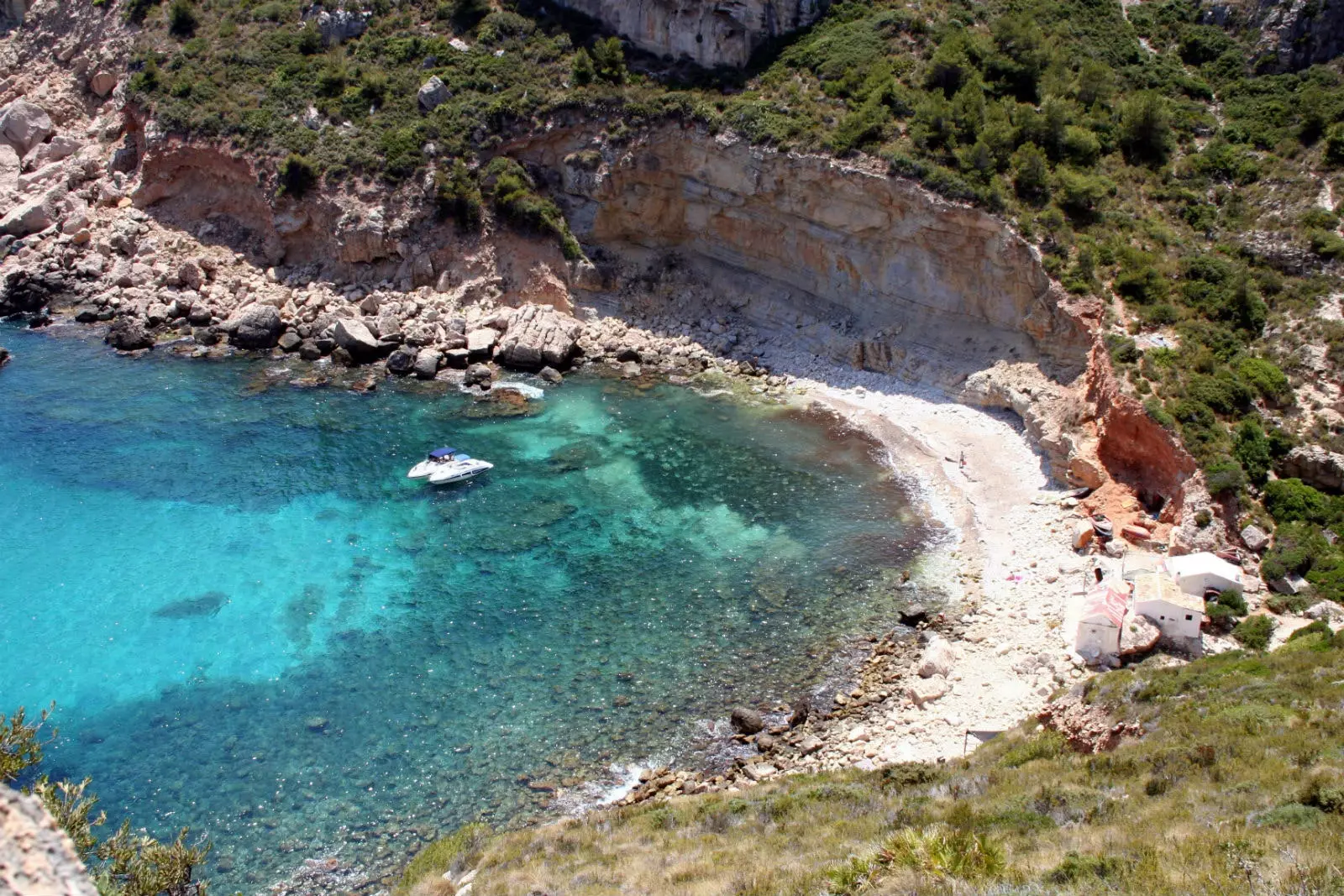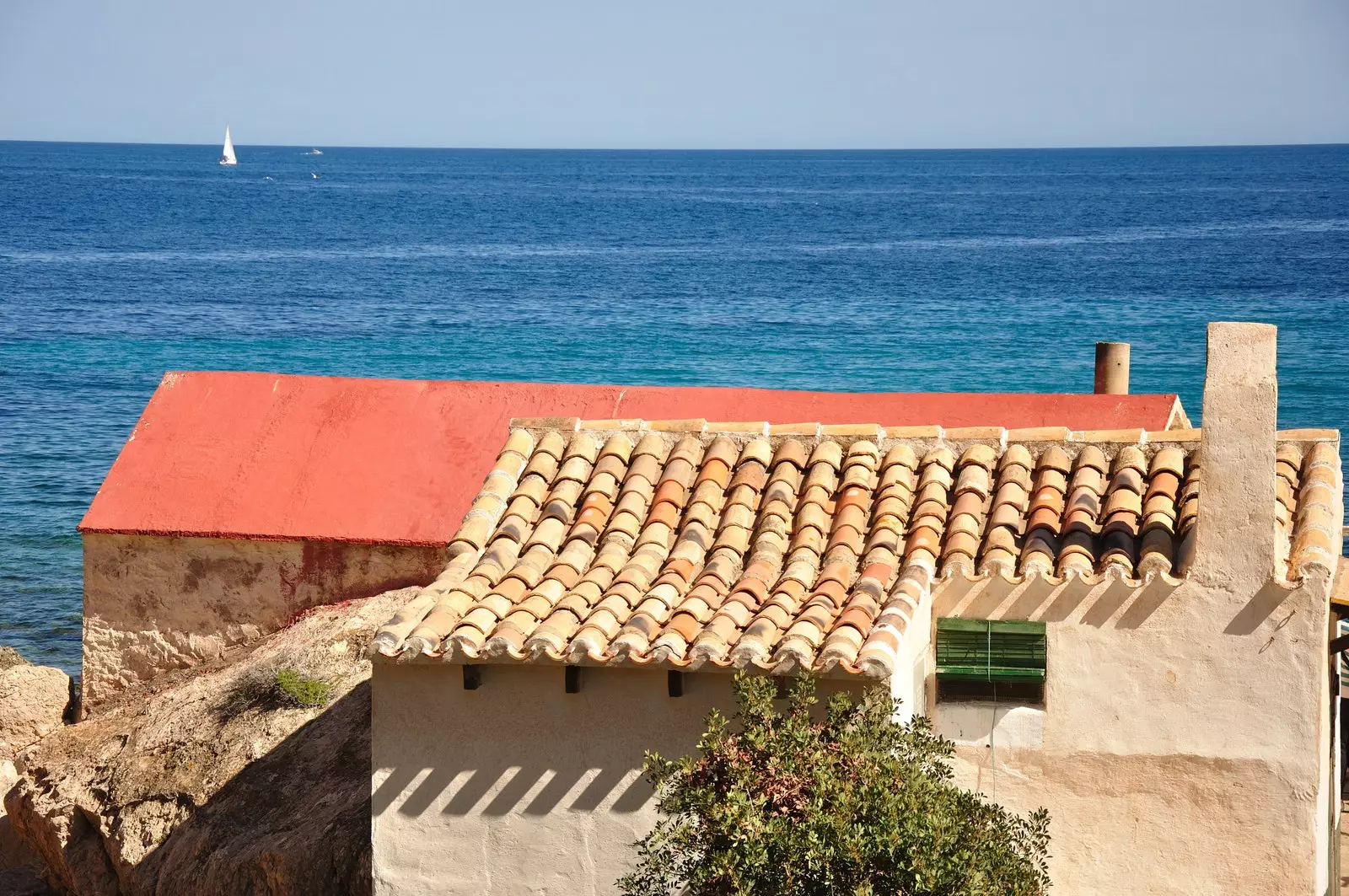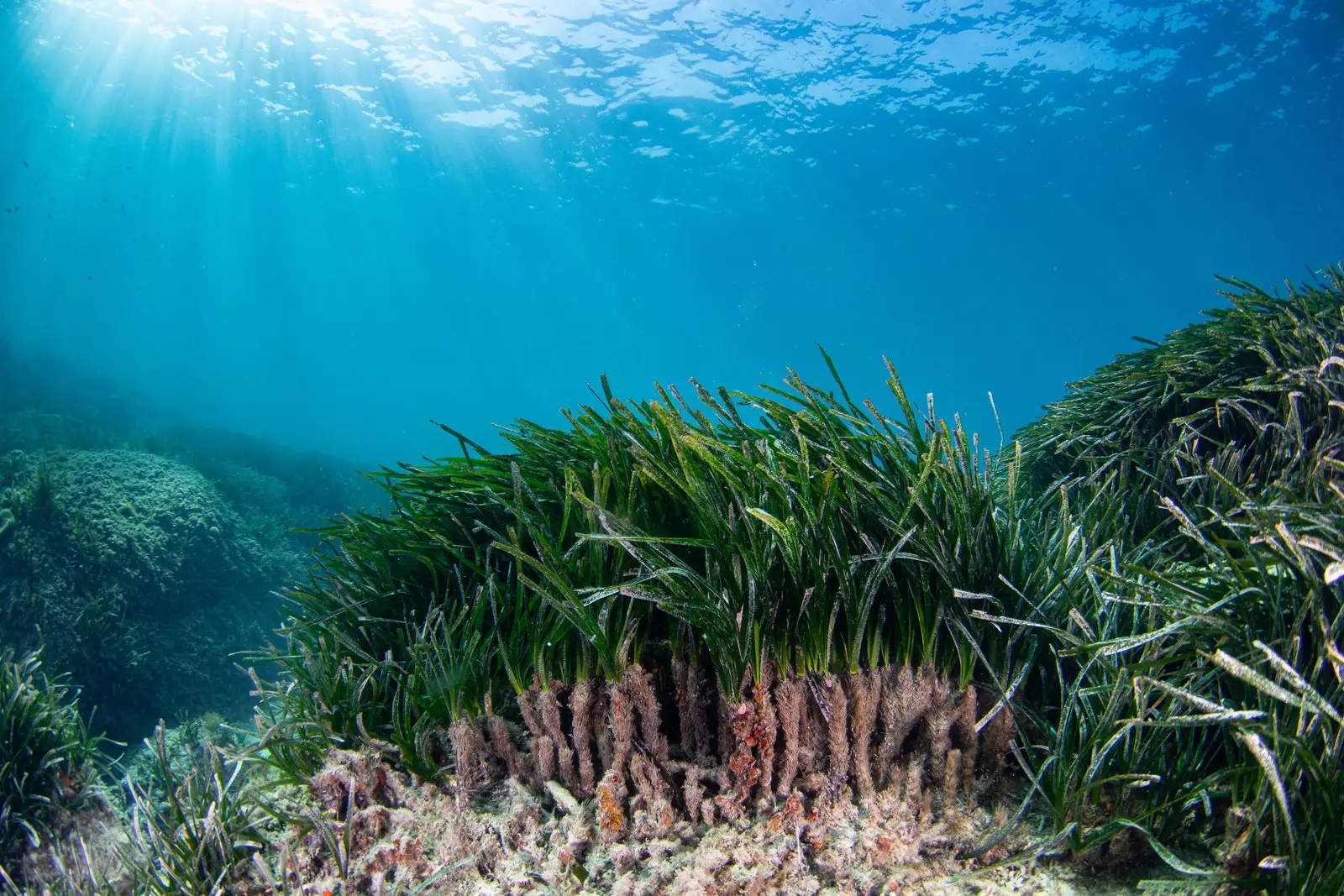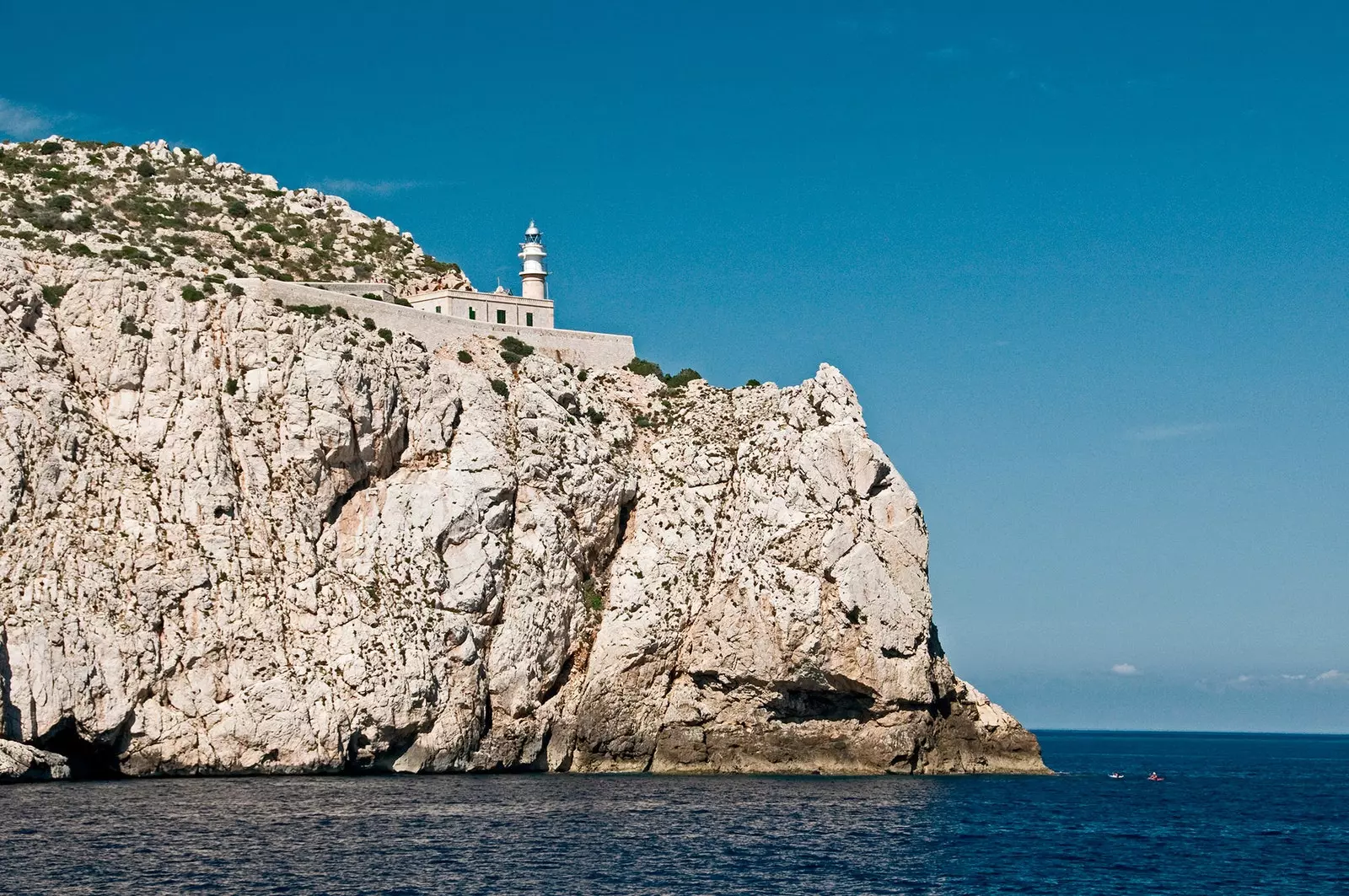
Cala Llebeig, Alicante.
Long lines waiting with your smartphone in front of a sunset, the concrete monsters that would have frightened the most daring pirates or lighthouses that some consider turning into restaurants. Tourism has blurred part of the historical charms of our coasts, but there are still corners that seem frozen in time, oblivious to the whims of the world. **Cala Llebeig is one of them. **
Located on the famous Route of the Cliffs of Benitatxell, in the Alicante region of La Marina Alta, Cala Llebeig is an oasis where its fishermen's houses speak of another era. From a 19th century in which protecting the coasts from pirates and smuggling was a job as usual as it was lonely.

Cala Llebeig seems frozen in time.
CALA LLEBEIG SMELLS OF CONTRABAND AND SIRENS
In the province of Alicante there are still places where time stands still: there we have the little houses of Villajoyosa, colorfully painted to guide confused fishermen; the aroma of saltpeter in neighborhoods such as Baix la Mar in Dénia or the restaurants in El Pinet that Paco Martínez Soria never reached. However, few places speak as well of its history as Cala Llebeig.
Until the 18th century, the portion of the Alicante coast between Dénia and Benidorm was playground for pirates and corsairs. In order to stop their activity, up to 20 towers and fortifications were built along the coast, highlighting the Torre d'Ambolo (in Jávea, to the north), and the Torre de Cap de Moraira (to the south).
However, between both surveillance points there were small coves that had to be recognized on a daily basis to check that no enemy vessel was outrunning the controls. To do this, a soldier called 'atallador' came to Cala Llebeig and raised the alarm in case of threat. **Pirates of the Caribbean fell short. **
With the passage of time, piracy gradually declined and throughout the 19th century fishermen from the nearby town of Benitatxell (4.3 km) began to move to this cove at the end of the Viuda ravine to fish during the weekends. Those long days led them to build the well-known covetes, a type of dwelling carved into the cliff itself where they kept the fishing equipment. In parallel, they erected little houses with blue portals, or casups, where wandering men gathered to compare catches and tell stories.
This enclave not only served to transfer the life of the town to the coast, but also as meeting place for fishermen, farmers and smugglers waiting for the illegal goods of tobacco, sugar and textiles, especially Manila shawls: "The boats arrived loaded from the port of Alicante for distribution in towns like Jávea through Cala Llebeig," Kiko Llobell, Culture technician at the Benitatxell City Council, tells Traveler.es. "The horses were loaded and sacks were placed on their legs so that, when walking, the sounds of the hoofs could not **betray the presence of the smugglers”. **
The new smuggling 'pirates' were one of the great scourges of the Royal Revenues in the 19th century, a reason that led the government to install a police post (the old Civil Guard) in one of the current houses of the cove to keep an eye on this secret corner of the Alicante coast.

Fishermen's houses in Cala Llebeig, Alicante.
Visiting Cala Llebeig today also has something furtive: after crossing the last pine trees and succumbing to the silence contained in the Viuda ravine, the blue portals promise a fish stew on the other side and the sun has confused the colors of the blinds. at the entrance they shine the rods from which the fishing was hung attached to the roofs with century-old flip-flops, and the old boats guard some covetes that look like warehouses, but also mermaid and sailor riding arenas.
And here, among so many trips to the past, one forgets the main reason why we came: turquoise blue waters that embrace this cove of boulders. Some dogs dare to take a bath, the cliffs whisper old poems and pretending for a few seconds that you are floating in another point in history is part of the experience. Diving goggles are a must to explore Posidonia, but also booties and sports shoes, since the way to get to Cala Llebeig means another of the great attractions of the visit.

Posidonia is the lung of the Mediterranean
WHAT THE CLIFFS PROTECT
Cala Llebeig it is only reachable on foot or by boat. The car is parked far away and this is the best indication that a treasure awaits us. The first option for beach seekers in a hurry consists of park the car in the Cumbre del Sol urbanization, where after a labyrinth of alleys you reach a parking lot for a maximum of ten vehicles. From here, it only remains to get lost in the path of rocks traced in the gorge of the ravine of the Viuda for about fifteen minutes until succumbing to paradise.
The second option to access Cala Llebeig, and the most attractive, is walk the famous Route of the Cliffs of Benitatxell (or Penya-Segats). From the Cala del Moraig car park, we follow the green and white markings of the SL-CV 50 route for 2.3 km that reveal treasures such as the Cova del Tio Domingo L'Abiar or the Cova del Morro del Bou, where old rudimentary ovens served to perpetuate a life sheltered by olive, fig and carob trees.

Llebeig Lighthouse
The last section of the route, perhaps the most complicated, is the descent that links the mountain with Cala Llebeig. A route that will always take longer to overcome when it comes to making all the necessary stops to photograph this **piece of history frozen in time. **
That yes, we trust in you and in an adventurous spirit that today, more than ever, cries out for being responsible. Because protect our assets and free them from overcrowding, littering or vandalism is the commandment that prevails in any place, including secrets of our shores. Remember that Cala Llebeig still watches over you. That here one does not know if it continues in 2021 or if at some point it will arrive another boat loaded with Manila shawls.
